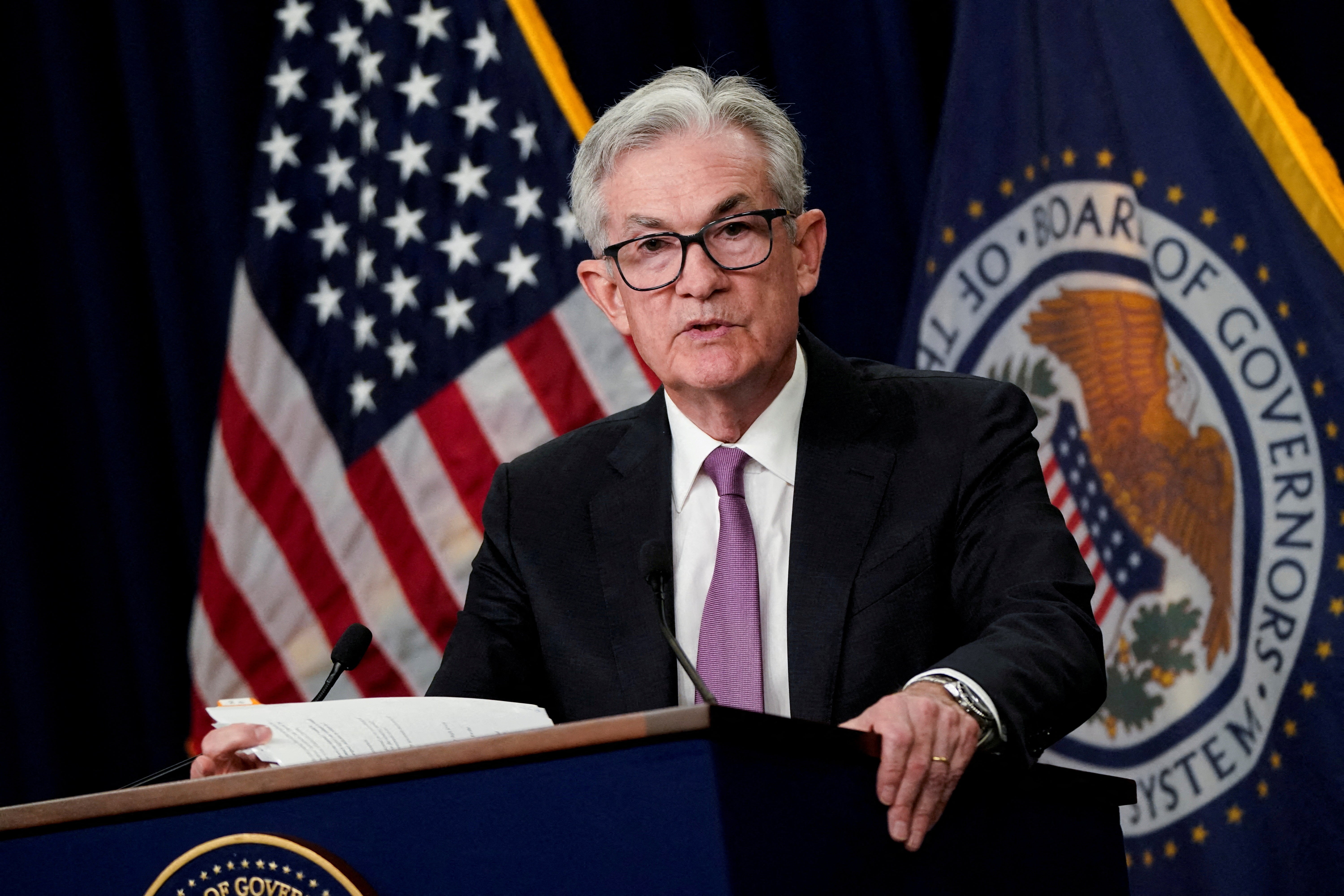US complacency on interest rates is over – and thank goodness for that
How long before the Fed can declare a victory over inflation and start cutting interest rates again? We don’t know, but I take comfort from the fact that at last the Fed is serious, writes Hamish McRae


The Fed is for real. That was the immediate verdict of the markets on Friday after the speech by Jay Powell, chair of the Federal Reserve, at the central bankers’ symposium in Jackson Hole, Wyoming.
The message was that the Fed would continue to raise interest rates and reverse quantitative easing – that ugly expression for central banks pumping money into the financial system – until inflation came back to 2 per cent. That was its “overarching focus right now”, he said, and it would mean “maintaining a restrictive policy stance for some time”.
You might think that was anodyne stuff, but the markets had been hoping that there would be some signal that, if the US economy tanked, the Fed would ease up. There wasn’t, and the S&P 500 index fell by 3 per cent. Now, with all markets, these short-term swings merely reflect how traders had positioned themselves. I think we should wait until after next weekend’s Labour Day holiday to figure out what the Fed really means. Then we can make sensible guesses about what will happen through the autumn. Meanwhile, here are my half-down top takeaways.
First, the Fed knows its own reputation is on the line. Inflation is profoundly unpopular and the Fed, along with other central banks, is embarrassed by its previous complacency. A year ago, at the same forum, Jay Powell argued that, although inflation had begun to rise, this increase was “transient”. Wrong. This is not just about the war in Ukraine, though that has particularly affected Europe and the UK. It is a more general failure, in particular allowing a speculative boom to get out of hand. The Fed might now overcompensate, but that is a risk it has to take.
Second, this will change the mood of markets in America and, because US equities account for 55 per cent of the world’s total, elsewhere too. The great debate in the US is whether the partial recovery in share prices since mid-June can be sustained, or whether the prospect of slower growth in earnings would push the bear market into a second downward leg. It would be great to know the answer but, of course, no one can. What is worth saying is that bears will see the prospect of tighter money “for some time” as vindicating their stance.
Third, whatever happens to the price of mainstream assets in the US, the more flaky ones will come under increasing pressure. Anyone who tries to predict the price of cryptocurrencies is brave or foolish, or both. But the move back to higher interest rates for a prolonged period inevitably reduces the attraction of all assets that do not bring a running return. It is simple maths.
If you can get a zero return on cash and can borrow very cheaply, it costs hardly anything to hold bitcoin. If you have to forgo, say, a 4 per cent return and it will cost you 6 per cent to borrow, holding bitcoin is less attractive.
Fourth, if the US presses on with higher interest rates, that pulls up rates everywhere. The markets expect a peak Fed Funds rate of between 3.5 per cent and 4 per cent. That does not mean that the Bank of England will inevitably hike rates to that level, but there will be great pressure on it to do so.
Fifth, further knock-on effects will include a still stronger dollar, which will make life difficult for the rest of the world. The pound is vulnerable for political reasons and because there a widening balance of payments deficit to fund. The euro is vulnerable because of the slow movement of the European Central Bank to increase interest rates and because of the internal tensions within the bloc.
To keep up to speed with all the latest opinions and comment, sign up to our free weekly Voices Dispatches newsletter by clicking here
Germany could easily stand higher interest rates. Italy can’t. Most emerging economies are vulnerable because a stronger dollar increases the cost of imports, including food – which is scary right now. There are a few winners, notably the oil and gas exporters, but they are vastly outnumbered by the losers.
Sixth, even solid assets are vulnerable to higher interest rates. US house prices seem to have peaked, particularly in once-fashionable locations such as San Francisco. Homebuyers around the world have to redo their sums as to what they can afford.
A global housing market crash? Well, no, partly because markets are all different, partly because there are a lot of cash buyers around and partly because, in many locations, there is still untapped demand. But more subdued markets everywhere really do seem the likely pattern for the next couple of years.
Couple of years? Ah. That really is the key question, isn’t it? How long before the Fed can declare a victory over inflation and start cutting interest rates again? They don’t know; we don’t know. But I take comfort from the fact that at last the Fed is serious. Leave aside the economics. Societies cannot function decently when people make more out of speculation than out of working, and where young families cannot afford to buy homes. The path to sanity has begun.






Join our commenting forum
Join thought-provoking conversations, follow other Independent readers and see their replies
0Comments